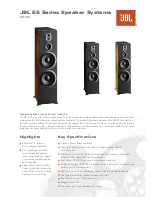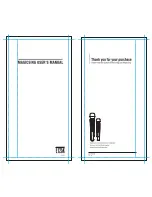
13
before or not, it is important that you become
familiar with your new plasma cutter. We
strongly recommend that you practice with
your new plasma cutter on scrap metal trying
different base metals, base metal thicknesses,
and cutting positions. By doing this you will
gain a feel for how changes in these variables
affect the cutting process.
Of course, if you have not used a plasma
cutter before, you will need to develop prop-
er cutting skills and techniques as well.
The self-taught operator learns through a
process of trial and error. The best way to
teach yourself how to plasma cut is with
short periods of practice at regular intervals.
All practice cuts should be done on scrap
metal that can be discarded. Do not attempt
to make any cuts on valuable equipment
until you have satisfied yourself that your
practice cuts are of good appearance and
free from major faults.
LEARNING TO PLASMA CUT
Holding the Torch
The best way to hold the cutting torch is the
way that feels most comfortable to you. The
torch can be comfortably held in one hand,
or steadied using two hands. Choose the
technique that feels most comfortable and
allows good control and movement.
Position the Torch to the Workpiece
The plasma torch nozzle should be perpendi-
cular to the workpiece. Excessive angling of
the torch can cause the plasma arc to cut
into the side wall of the nozzle, resulting in
damage to the torch components. It is impor-
tant to keep the cutting torch at the proper
distance from the material being cut. This
distance may vary slightly, depending upon
the type of material and thickness of material
being cut, but a general rule of thumb is to
keep the nozzle approximately 1/16 to 1/8
inch from the material being cut.
See Figure 6 for proper torch position.
CUTTING
A “cutting” operation is generally defined as
one where the penetration begins at an
existing edge of the workpiece. Whether this
edge is an outer edge or a previously made
hole somewhere in the workpiece is irrele-
vant. Cutting operations require a slightly dif-
ferent technique than Piercing operations
(described in next section).
1. Position your index finger on the trigger.
2. Hold the torch with the nozzle orifice
directly over the edge of the workpiece.
Note:
Arc stretching can occur at the begin-
ning and end of the cut if the arc has to
"stretch" (deviate from a straight, perpendicu-
lar path) to find metal. Arc stretching can
cause the arc to cut into the side wall of the
nozzle.
Figure 6
. Torch Position
Figure 5
. Principles of Plasma Cutting
Summary of Contents for WE6494A
Page 17: ...17 TROUBLESHOOTING...
Page 18: ...18 18 PLASMA CUTTER MODEL WE6494A WIRING DIAGRAM...
Page 19: ...19 19 PLASMA CUTTER MODEL WE6494A PARTS LIST...
Page 20: ...20 PLASMA CUTTER MODEL WE6494A PARTS DIAGRAM...
Page 21: ...21 PLASMA CUTTER MODEL WE6494A TORCH PARTS LIST...
Page 22: ...NOTES...
Page 23: ...NOTES...
Page 24: ...220V PLASMA CUTTER OPERATING MANUAL Model WE6494A WE6494A M001 1204...










































